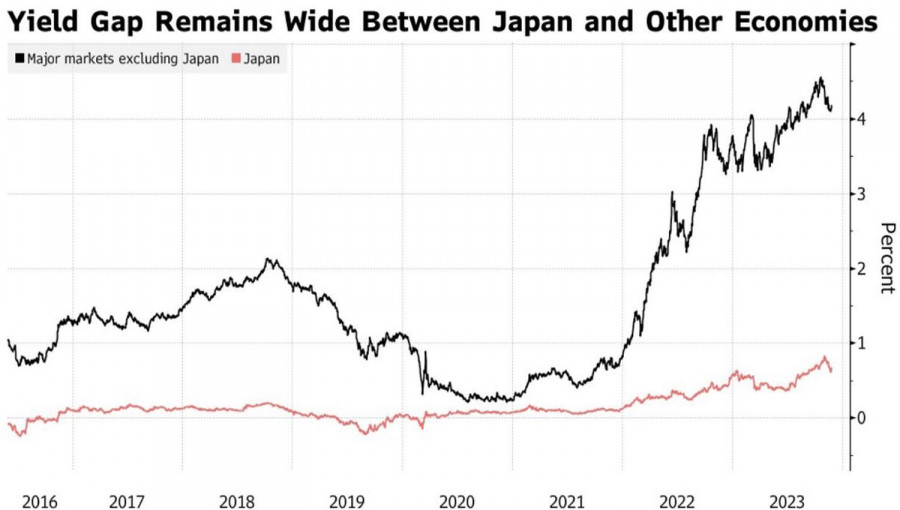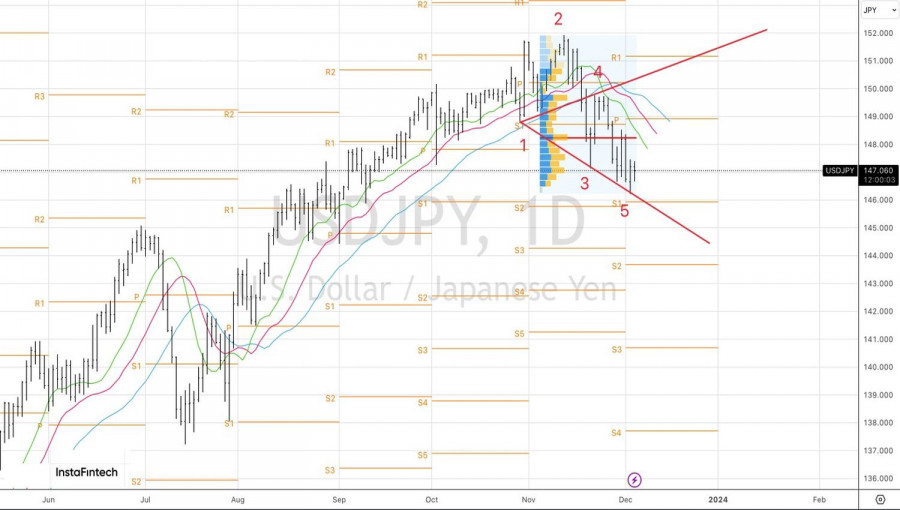It's hard not to believe your eyes. Considering the yen's more than 12% depreciation against the U.S. dollar since the beginning of the year and its 9% decline against the currencies of Japan's main trading partners, it's difficult to believe that the upward trend in USD/JPY has been broken. The most likely scenario based on technical analysis is a correction. However, fundamental analysis tells a different story.
It's challenging to find a more stubborn entity in Forex than the Bank of Japan. Despite inflation exceeding the 2% target for the 19th consecutive month, it continues to adhere to an ultra-loose monetary policy with negative rates, QE, and yield curve targeting. All these measures distort the country's financial market and weaken its currency. As a result, import prices rise, as do expenses for foreign energy resources. The deterioration of the current account pushes USD/JPY quotes even higher.
It's no wonder that hedge funds are ignoring the November peak of the pair and increasing net shorts on the yen to the maximum level since April 2022. They are betting on the wide spread of yields between U.S. and Japanese bonds, leading to a capital inflow from Asia to North America and contributing to the rise of USD/JPY.
Dynamics of U.S. and Japanese bond yields

The slowdown in inflation in Tokyo, which is a leading indicator for the national consumer price index, from 2.7% in October to 2.3% in November, can be considered a bearish factor for the yen. The Bank of Japan may perceive the slowing growth of the CPI as an argument in favor of maintaining an ultra-loose monetary policy, especially since the indicator did not reach the Bloomberg expert consensus forecast of 2.4%.
But it's not all that straightforward. Inflation is likely to extend its stay above the 2% target for the 20th consecutive month, and the high chances of the Fed easing its monetary policy confirm the idea of a broken upward trend in USD/JPY. The futures market expects a 125 bps cut in the federal funds rate to 4.25% in 2024. Even if the Bank of Japan does not abandon negative interest rate policies, a rate cut in the U.S. makes the yen a favorite against the U.S. dollar.
Inflation dynamics in Japan


In this regard, the release of U.S. labor market data is crucial for understanding the further dynamics of the analyzed pair. An acceleration of non-farm payroll growth from 150,000 in October to the expected Bloomberg expert consensus of 200,000 in November will allow the Fed to stick to its policy of keeping the federal funds rate on hold for an extended period in December forecasts. On the contrary, labor market cooling is the key to selling the U.S. dollar.
Technically, on the USD/JPY daily chart, only a rise in quotes above fair value at 148.25 can activate the reversal pattern of the Wolfe Wave and increase the risks of a recovery in the upward trend. As long as the pair trades below this level, we continue to sell it towards 146.0 and 142.5.
The material has been provided by InstaForex Company - www.instaforex.comfrom Forex analysis review https://ift.tt/mHVrkzo
via IFTTT
